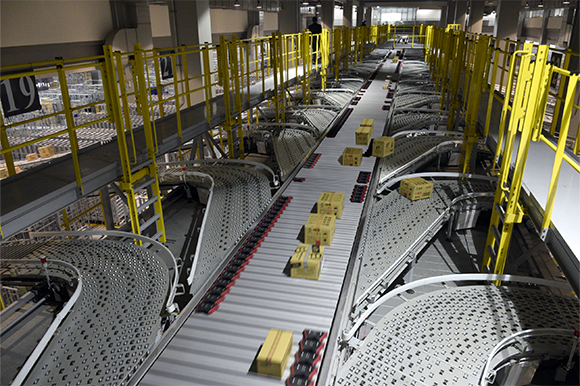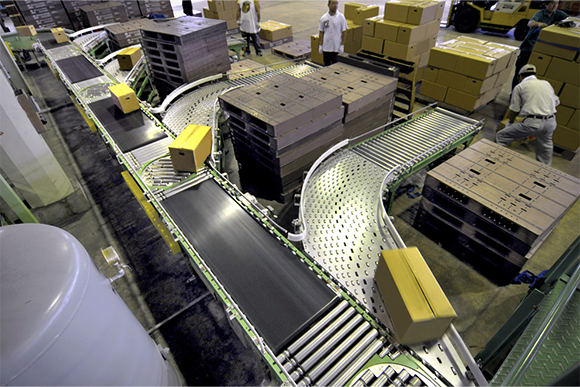As we delved into the benefits of automation in the food industry, this article will explore five key benefits of implementing automated waste sorting technologies, focusing on different types such as optical sorting, sensor-based sorting, and air-based sorting. We will also discuss the challenges and considerations associated with these technologies to provide a comprehensive overview for businesses and municipalities looking to improve their waste management practices.
Types of Waste Sorting Technology
Before delving into the benefits, let’s briefly examine the different types of waste sorting technologies:
- Manual Sorting: While labor-intensive, manual sorting remains crucial for certain types of waste, such as bulky items or those requiring specialized handling. However, it is prone to human error, fatigue, and safety hazards.
- Automated Sorting:
- Optical Sorting: This technology utilizes cameras and sensors to identify and separate materials based on color, shape, and near-infrared spectroscopy (NIR). NIR can detect chemical composition, enabling the separation of different types of plastics, paper, and other materials.
- Applications: Widely used in recycling facilities for sorting plastics, paper, glass, and even food waste.
- Advantages: High accuracy, high throughput, minimal human intervention.
- Disadvantages: Can be expensive to implement and maintain, may not be effective for all types of waste.
- Optical Sorting: This technology utilizes cameras and sensors to identify and separate materials based on color, shape, and near-infrared spectroscopy (NIR). NIR can detect chemical composition, enabling the separation of different types of plastics, paper, and other materials.

- Sensor-Based Sorting: This technology employs various sensors, including metal detectors, x-ray systems, and eddy current separators, to identify and separate materials based on their physical and chemical properties.
- Applications: Used to separate metals, glass, and other materials with distinct physical properties.
- Advantages: High accuracy for specific materials, relatively low maintenance costs.
- Disadvantages: May not be suitable for all types of waste, can be less versatile than optical sorting.
- Air-Based Sorting: This technology utilizes air classifiers to separate materials based on their density and aerodynamic properties.
- Applications: Effective for separating lightweight materials such as paper, plastic films, and organic waste.
- Advantages: High throughput, low energy consumption.
- Disadvantages: May not be suitable for all materials, requires precise airflow control.
- Emerging Technologies:
- AI-powered robotics: Advanced robotics equipped with AI and machine learning capabilities can perform complex sorting tasks, adapting to changing waste streams and improving efficiency over time.
- Biomimicry: Inspired by natural systems, innovative technologies like bio-based sorters are being developed to mimic the sorting behaviors of animals, offering more sustainable and efficient solutions.

Benefits of Waste Sorting Technology
- Increased Recycling Rates: Automated systems significantly improve the accuracy and efficiency of waste sorting, leading to higher recovery rates of valuable materials. This reduces the amount of waste sent to landfills and maximizes the utilization of resources.
- Improved Waste Quality: By minimizing human error and maximizing sorting accuracy, automated systems produce higher-quality recycled materials. This increases the demand for recycled materials in manufacturing processes, creating a stronger market for recycled goods.
- Reduced Landfill Waste: By diverting more materials from landfills, automated waste sorting technology helps to reduce the environmental impact of landfills, including greenhouse gas emissions, leachate contamination, and land degradation.
- Resource Recovery and Conservation: By effectively separating and recovering valuable materials, these technologies contribute to resource conservation. This reduces the need for virgin materials in manufacturing, conserving natural resources and minimizing environmental impacts associated with extraction and processing.
- Cost Savings (Long-Term): While the initial investment in automated sorting technology can be significant, it often leads to long-term cost savings. Increased recycling rates, reduced labor costs, and the ability to produce higher-quality recycled materials can generate substantial economic benefits.
Challenges and Considerations
- Initial Investment Costs: The initial investment in automated sorting equipment can be substantial, requiring careful planning and budgeting.
- Maintenance and Operational Costs: Ongoing maintenance and operational costs, including energy consumption, equipment repairs, and software updates, must be considered.
- Technology Limitations: While highly advanced, current technologies may not be able to effectively sort all types of waste, particularly complex or contaminated materials.
Data Privacy and Security Concerns: AI-powered systems may collect and process sensitive data, raising concerns about data privacy and security. - Integration with Existing Waste Management Systems: Integrating automated sorting systems with existing waste management infrastructure can be challenging and may require significant modifications.
Conclusion
Automated waste sorting technology offers numerous benefits, including increased recycling rates, improved waste quality, reduced landfill waste, and resource conservation. By embracing these technologies, businesses and municipalities can significantly improve their environmental performance and contribute to a more sustainable future. The future of waste sorting lies in the continued development and integration of industrial automation, such as AI-powered robotics and biomimicry, to further enhance efficiency, accuracy, and sustainability.


